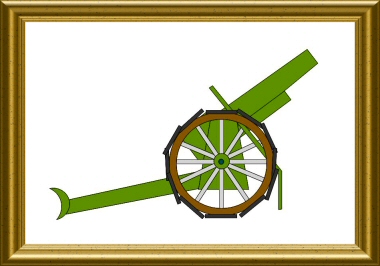|
|
|
|
|
|
|
 Germany
|
15cm schwere Feld Haubitze 13 L/14 |
 Heavy artillery
|
|
|
Contributor :
|
Location :
Australia
Montmorency, VIC
RSL
Coordinates :
Lat : -37.71692 / Long : 145.12473
|
General comments on this surviving gun :
Identical items in the same location :
1
Items covered by this file :
1
|
|

|

|

|
Captured by the 22th AIF batallion at the Mont St Quentin Battle in Sept 18, 1918 in France
|
Markings : 'Nr 4035 - Fried Krupp. - 1918'.
|
This survivor's condition seems brilliant
|
|
|
Historic and technical information
|
|
Denomination :
15cm sFH 13 L/14
|
Origin :
 (
Krupp)
(
Krupp)
 (
RheinMetall )
(
RheinMetall )
|
|
Historic context :
As soon as 1908 the APK ('Artilerie Prüfungs Komission') confirmed its need for a heavy field howitzer whose characteristics should be at least as good as the good 15cm sFH 02, but equipped with a crew protecting shield (only possible with a better mastering of the recoil movements) and allowing the same fire rates at all elevation angles. Both Krupp and RheinMetall launched their engineerings at work, so that prototypes tests could start at the end of 1910, knowing that some prototypes were already existing in both companies before the APK call. The tests and modifications requests lasted not less than 3 years with the manufacturing of several new prototypes by both competitors on a straight side-by-side technological battle !
In 1913, the Army officialized Krupp's victory by ordering 360 of the new '15 cm sFH 13' howitzers, but recognized RheinMetall's contribution (particularly for the variable recoil mechanism idea) by declaring this weapon was the fruit of joined efforts of both competitors. Krupp had to overcome the proud wound this statement probably generated, and started the production in its works but also with the help of RheinMetall as a contractor (as well as state arsenal in Spandau) .
The modernization allowed to shoot the same 42 kg powerful projectile at a distnace increased by 15 %, thanks to a barrel length increase by 2 calibres, a modified carriage and a more complex variable recoil recuperating mechanism, not forgetting the crew steel shield finally installed and proved very useful for counter-battery fire protection. The design also integrated the nice Krupp concept for the barrel balancing : the trunnions linking the recoil recuperation system craddle were pushed back to the rear at the level of the breech. This disposition was giving a higher position to the tube that finally allowed the servants to load the ammos by the breech even when was tube was pointing at high elevation angles. The desequilibrum induced by the trunnions position far away from the center of gravity was compensated by a balancing system.
In 1915, an improvement had to be implemented with the addition of a pneumatic recuperator to cempensate a design weakness of the recoil spring. Very mobile but also powerful, this howitzer could be sent near the first lines and was considered by the German Army as one of its best weapons.
The new heavy howitzer '15 cm sFH 13' was not yet available at the start of the war in August 1914, but was massively introduced in the German (and Turkish) heavy artillery units afterwards . More than 3409 such weapons were built, 2676 by Krupp, and 733 by Rheinmetall (on identical plans).
Introduced from the end of 1914, and et culminating at 852 items in November 1916, it was still present in 440 items in November 1918 and stayed in service until the start of WW2 into the IIIrd Reich armies.
A detailed story of German Heavy Field Artillery creation has been written by Ralph Lovett in this page that can be recommended : Development of the German 15cm.
|
Technical data :
- Complete description : 15cm L/14 heavy field howitzer M 13
- Design year : 1913
- Calibre : 149.70 mm
- Weight in firing position : 2135 kg
- Weight for transportation : 2820 kg
- Tube length in calibres : 14.00 (total tube length) - 11 for the grooved part only
- Grooves : 36 progressive angle 5 to 10 degrees
- Projectile weight : 42 kg
- Initial speed : 365 m/s at maximum charge
- Fire rate :
- Range : 8500 m
- Elevation range : 0 to +45 degrees
- Direction range : 5 degrees total range
|
Sources
|
|
|
|

